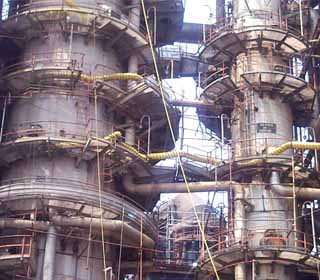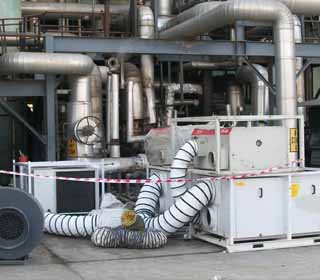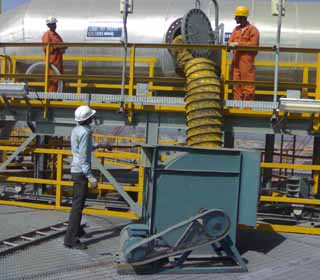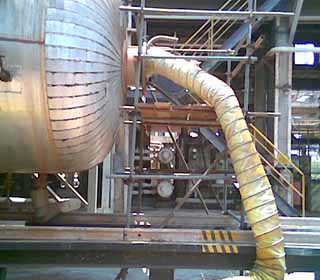Safe Confined Area Access - Ventilation
What is a confined space?
A confined space is defined as an area that is large enough for someone to enter and perform work but has limited or restricted means for entry or exit and is not designed for continuous occupancy. Examples of confined spaces include tanks, columns, spheres, boilers, drums, chimneys, pipelines, cyclones, dust catchers, scrubbers, sulphur pits, ESP areas, kiln, and other similar spaces, by virtue of its enclosed nature.
Working in confined spaces requires special precautions and safety measures, such as:
– Conducting a risk assessment before entry
– Using proper ventilation to ensure adequate air quality
– Monitoring the atmosphere for hazardous gases
– Implementing emergency rescue procedures
– Providing appropriate personal protective equipment (PPE)
– Ensuring trained personnel are available to assist in case of an emergency
Confined spaces can be extremely dangerous, and proper safety protocols are essential to protect workers.
Problems in a Confined Space
In confined spaces, maintenance and repair tasks such as welding, fabrication, riveting, strip lining, nozzle replacement, and tray replacement are often performed. Consequently, the air within these spaces become unhealthy and hazardous. The presence of numerous people and the nature of the maintenance work elevate the temperature to approximately 48-50°C with high relative humidity.
Also, the inherent danger of working in a confined space environment include:
- Toxic, flammable, or explosive atmospheres
- Harmful gas, fume, or vapour
- Lack of oxygen
- Excessively high temperature
- Chemical exposures due to skin contact or ingestion as well as inhalation of ‘bad’ air.
- Physical hazards – noise, heat/cold, radiation, vibration, electrical, and inadequate lighting.
Solution
- The temperature of the confined area should be between 32º – 35ºC
- The relative humidity inside the confined area should be below 60%
- Replenish oxygen at the correct amount of air change
- Purging out toxic gases and replacing it with treated fresh air at the correct amount of air change
Our Solution
TDS provides customized dehumidification and temperature control systems to create the perfect working conditions inside the confined areas. Our package includes dehumidifiers, condensing units, blowers, and ducts backed by technical manpower to maintain the required relative humidity and temperatures inside the confined areas.
Desiccant based dehumidifiers adsorb the excess moisture from the air and maintain RH below 60%. At the same time, the condensing units help in maintaining the temperature between 25º-26ºC.
Benefits
- Improvement in productivity of the workers
- Shutdown period is not extended hence reduced revenue loss
- Timely completion of projects
- Reduction of shutdown time resulting in tangible cost benefit
- Health of the workers, inspectors, maintenance department, engineers is not affected.
Application based solutions for
Ventilation
Key Installations

BPCL, Mumbai

IOCL, Panipat

RIL, Jamanagar
